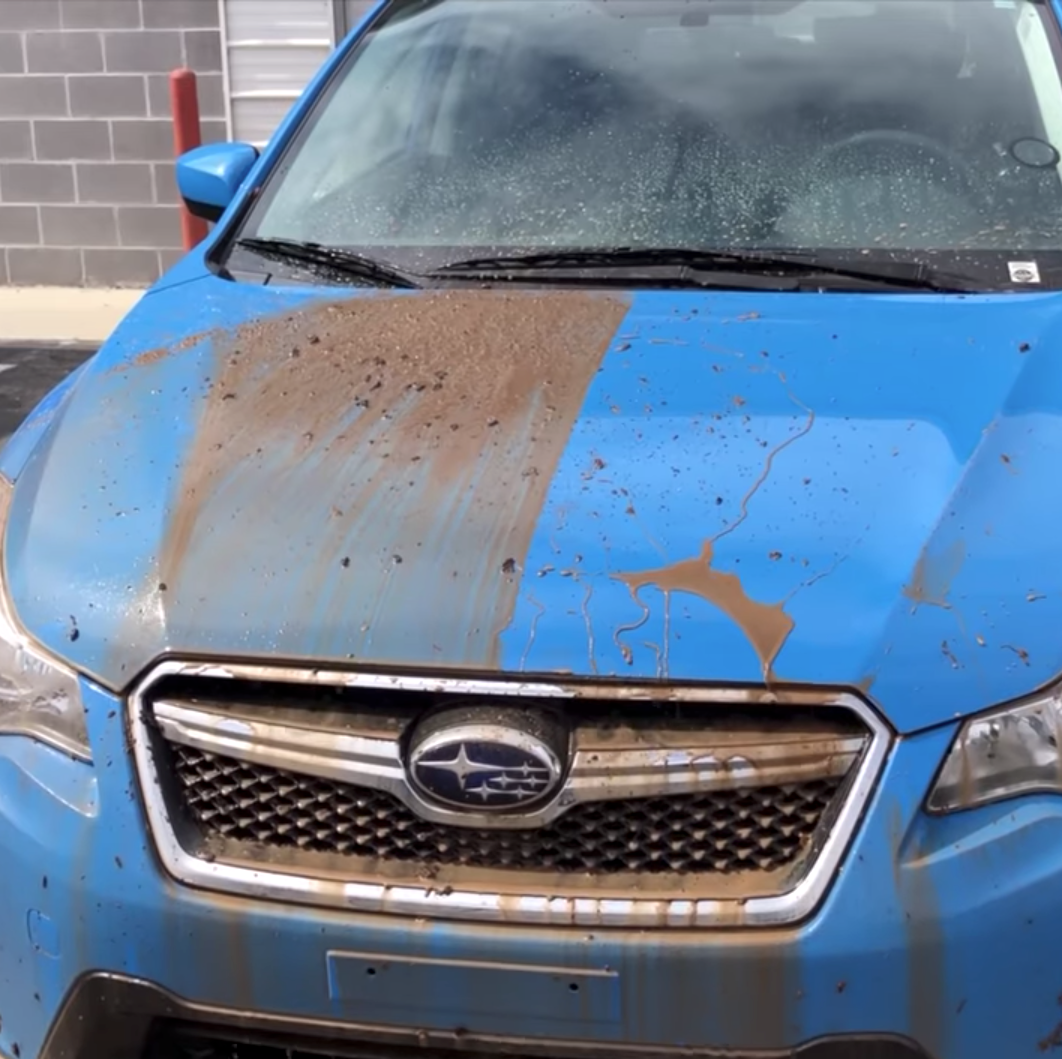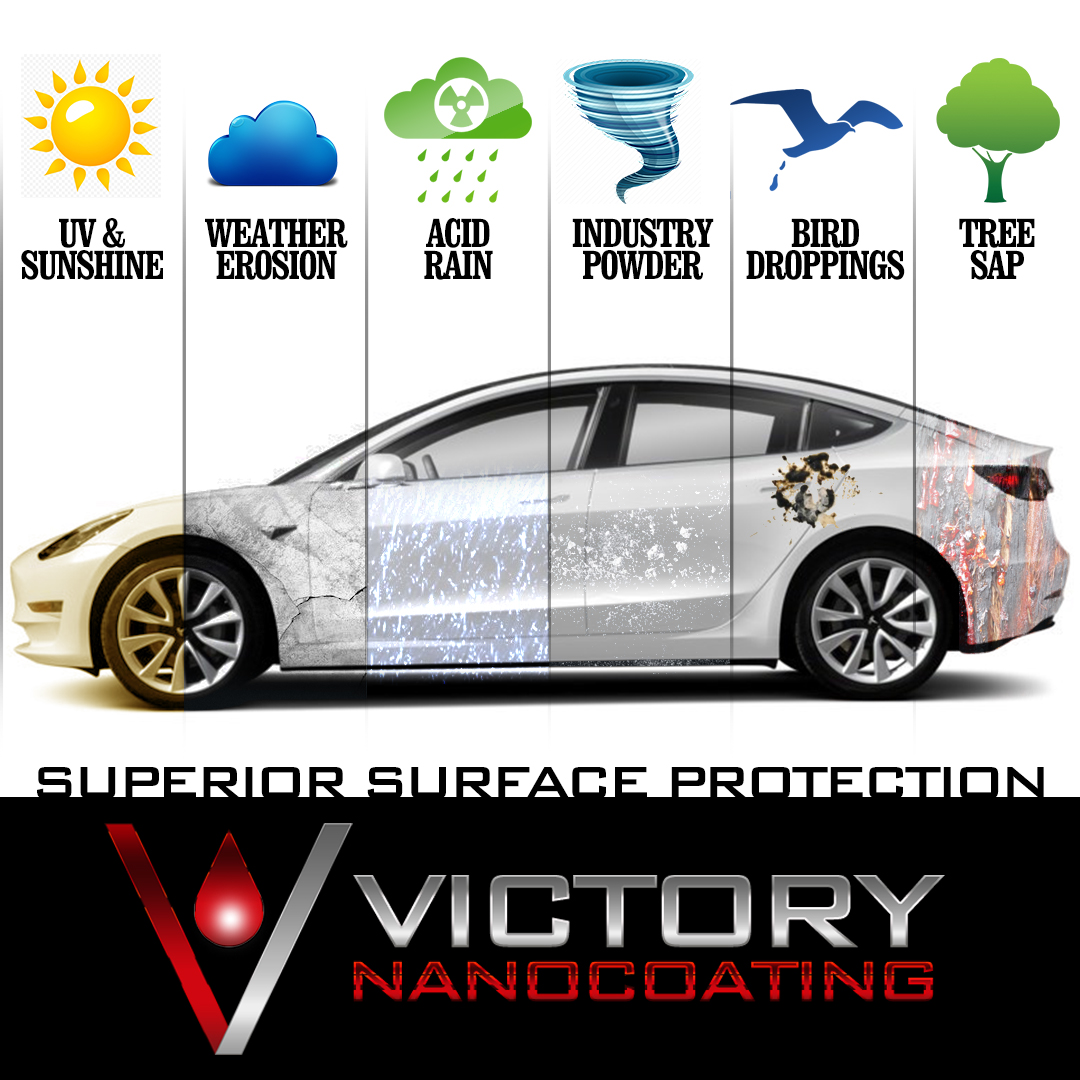Final Touch Auto Works Ceramic Coatings and the Secret to Scratch Resistance
Final Touch Auto Works Ceramic Coatings and the Secret to Scratch Resistance
Blog Article
The Ultimate Guide to Ceramic Coatings: Enhancing Your Vehicle's Complete and Sturdiness
Ceramic layers might be the remedy you've been browsing for if you're looking to elevate your vehicle's look and defense. These sophisticated finishings bond with your car's paint, creating a resilient obstacle against ecological damage. However exactly how do they pile up versus typical wax? Comprehending the advantages and application procedure can make a substantial difference in your vehicle care routine. Allow's discover what makes ceramic coverings a rewarding financial investment for your car.
What Are Ceramic Coatings?
Ceramic coverings are sophisticated protective layers that enhance your cars and truck's outside. They're made from a fluid polymer that chemically bonds with your vehicle's paint, producing a durable shield. Unlike typical wax or sealants, which subside gradually, ceramic layers give lasting security versus environmental pollutants like UV rays, dirt, and chemicals.When you apply a ceramic layer, you're purchasing an obstacle that pushes back water, making it simpler to cleanse your cars and truck and keeping it looking more recent for longer. This modern technology helps preserve the honesty of your paint, decreasing the risk of scratches and oxidation.Ceramic coatings can be found in various solutions, each designed to satisfy various demands and choices. You can choose a do it yourself package or go with specialist application, relying on your comfort level and budget. In general, ceramic coverings represent a cutting-edge option for maintaining your automobile's visual charm and long life.
Benefits of Ceramic Coatings
You expose a variety of advantages that go past plain visual appeals when you invest in a ceramic covering. To start with, it supplies extraordinary defense versus ecological pollutants like dust, bird droppings, and UV rays, maintaining your automobile's paint looking new longer. You'll discover that upkeep comes to be less complicated, as the hydrophobic buildings create water and grime to slide off effortlessly. This implies less time invested washing and detailing your vehicle.Additionally, ceramic finishings can improve the glossiness of your automobile's finish, offering it that display room shine. They additionally supply resistance to scrapes and swirl marks, which aids keep your vehicle's resale worth. With a ceramic finish, you're not simply securing your investment; you're additionally improving its total appearance and longevity. Ultimately, this innovative modern technology assurances your cars and truck attracts attention while enjoying lasting benefits that traditional waxes simply can't match.
The Application Refine: How to Use Ceramic Coatings
Using a ceramic finishing includes several vital steps to ensure perfect outcomes. First, extensively wash your auto to get rid of any dust, gunk, or contaminants. This ensures the surface is tidy and prepared for the covering. Next off, sanitize the paint using a clay bar to remove embedded fragments. Later, inspect the paint for blemishes and polish it to attain a smooth surface.Once your vehicle's surface area is prepped, use the ceramic coating in tiny areas. Use an applicator pad to spread the coating uniformly, complying with the manufacturer's instructions. Permit the finishing to cure for the recommended time, typically in between one to two hours, depending upon the product.Finally, stay clear of cleaning your vehicle for a minimum of a week to allow the finishing bond effectively. Adhering to these steps will certainly help you attain a sturdy, high-gloss coating that shields your automobile for many years to come.

Contrasting Ceramic Coatings to Typical Wax
After guaranteeing your cars and truck's surface is completely prepped with a ceramic covering, it's time to ponder just how this modern service piles up versus conventional wax. Ceramic coatings offer a durable layer of defense that lasts for many years, while wax typically provides only a couple of weeks of luster. You'll discover that ceramic finishings bond with your paint, creating a hydrophobic surface area that repels water and dirt, making maintenance easier.In contrast, standard wax sits on top of the paint and needs frequent reapplication. With ceramic finishes, you obtain exceptional scrape resistance and UV defense, helping to stop fading and oxidation. While the initial investment for a ceramic finish is higher, the lasting benefits frequently exceed the expenses. If you're looking for sturdiness and boosted gloss, ceramic layers are a smart selection over conventional wax.
Upkeep Tips for Your Ceramic Covered Automobile
To maintain your ceramic-coated vehicle looking beautiful, normal upkeep is important. Beginning with a gentle laundry using a pH-balanced shampoo; avoid harsh detergents that can degrade the finishing. Use a microfiber clean mitt to avoid scratches and constantly rinse thoroughly to get rid of any kind of soap residue.After washing, dry your cars and truck with a soft microfiber towel to stay clear of water areas. Think about applying a ceramic upkeep spray every few months to boost the finish's hydrophobic properties and include an additional layer of protection.It's also a good idea to prevent automated automobile washes with unpleasant brushes, as they can harm the finishing. Rather, opt for hand cleans or touchless laundry options. In addition, consistently inspect your car for impurities like tree sap or bird droppings and address them without delay to stop etching. Complying with these pointers will aid preserve the sparkle and longevity of your ceramic-coated car for several years to come.
Typical Myths Concerning Ceramic Coatings
In spite of the remarkable benefits of ceramic finishings, numerous myths can produce confusion for automobile proprietors. One common mistaken belief is that ceramic finishes remove the need for maintenance. While they do supply enhanced protection, routine cleaning and treatment are still important to keep that high-gloss finish.Another misconception is that these coatings are scratch-proof. While they offer a solid layer of protection versus minor scratches, they can't stand up to severe influences or abrasive materials.Many also believe that ceramic finishes will certainly make their cars immune to all contaminants. Actually, they push back dust and water yet will not avoid issues like bird droppings or tree sap from triggering damage if left unattended.Lastly, some think that using ceramic layers is a do it yourself job any person can handle, but achieving a flawless application typically needs expert know-how to assure peak outcomes.
Picking the Right Porcelain Finishing for Your Automobile
How do you pick the ideal ceramic finishing for your automobile? Begin by considering the degree of security you need. If your auto deals with extreme weather condition or constant road journeys, select a premium finish that provides superior longevity and resistance to scrapes, UV rays, and chemical stains.Next, think concerning the application approach. Some finishes require specialist setup, while others are DIY-friendly. If you're experienced, a do it yourself product could save you money, but also for the very best outcomes, an expert can assure appropriate application.Don' t neglect to inspect the durability of the finish. Some last a few years, while others can secure for a decade or more. Check out endorsements and reviews to gauge customer fulfillment. By considering these elements, you'll discover a ceramic coating that not only boosts your automobile's look yet also offers resilient their explanation defense.
Frequently Asked Concerns
For How Long Do Ceramic Coatings Last generally?
Ceramic finishings commonly last anywhere from 2 to 5 years, depending upon variables like application, upkeep, and ecological problems. You'll wish his comment is here to follow proper care routines to maximize their durability and efficiency.
Can Porcelain Coatings Be Applied Over Paint Scratches?
You can not apply ceramic finishes over paint scratches efficiently. It's ideal to repair any scratches first, guaranteeing a smooth surface - Final Touch Auto Works Ceramic Coatings. In this manner, the layer bonds properly and provides perfect protection for your vehicle's finish
Are Ceramic Coatings Safe for All Vehicle Surfaces?
Ceramic coverings are typically safe for a lot of automobile surfaces, including paint, glass, and wheels. Nonetheless, it is crucial to examine details item guidelines, as some coverings might not appropriate for specific materials or finishes.

Will Porcelain Coatings Protect Against UV Damage?

Can I Do Touch-Ups on Ceramic Covered Surface Areas?
You can do touch-ups on ceramic coated surface areas, but it's vital to utilize suitable products. Validate the area is tidy and adhere to proper application methods to maintain the layer's stability and efficiency. Unlike traditional wax or sealants, which use off over time, ceramic coatings supply durable protection versus ecological contaminants like UV rays, dirt, sites and chemicals.When you use a ceramic finish, you're investing in a barrier that pushes back water, making it easier to clean your cars and truck and maintaining it looking newer for longer (Final Touch Auto Works Ceramic Coatings). Afterward, examine the paint for blemishes and polish it to accomplish a smooth surface.Once your cars and truck's surface is prepped, apply the ceramic coating in small areas. Enable the covering to cure for the recommended time, commonly in between one to two hours, depending on the product.Finally, prevent cleaning your car for at least a week to allow the layer bond effectively. Take into consideration using a ceramic upkeep spray every few months to boost the finishing's hydrophobic residential properties and include an added layer of protection.It's also sensible to avoid automatic vehicle cleans with rough brushes, as they can harm the coating. Ceramic layers are generally secure for the majority of vehicle surfaces, including paint, glass, and wheels
Report this page